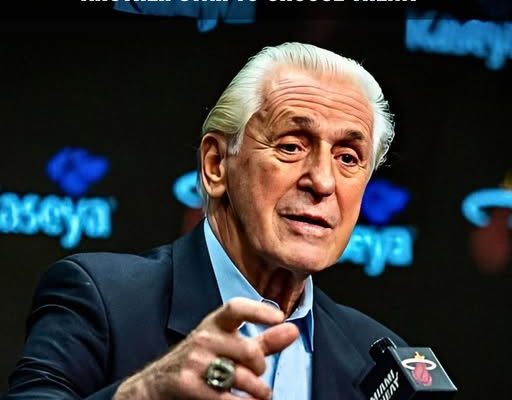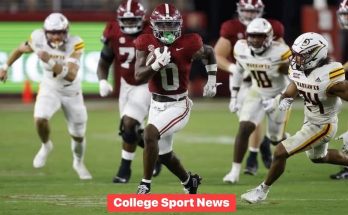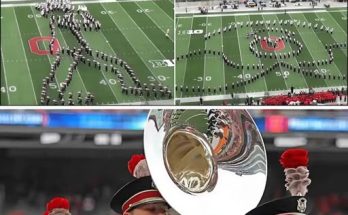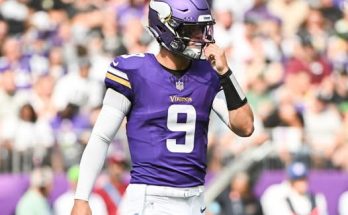The NBA is a league constantly in flux. Dynasties rise and fall, philosophies shift, and the teams that fail to evolve are often left in the dust. Among the storied franchises trying to keep up with the ever-changing tides of professional basketball is the Miami Heat, a team with one of the most respected histories in modern sports. With three NBA championships, countless playoff appearances, and a culture that has become legendary in its own right, the Heat have long been viewed as a model of stability and success. Yet, a recent ranking by CBS Sports has cast a different light on Miami’s current direction—or lack thereof.
CBS Sports ranked the Miami Heat’s front office at No. 13 in the NBA, and while that doesn’t scream dysfunction, it’s a clear fall from grace for a franchise that once prided itself on being at the very top. More telling than the rank itself, however, is the biting commentary that accompanied it. According to CBS, “The overall vision here feels outdated. The Heat appear far too comfortable being mediocre… Right now, they’re just sort of stuck. There doesn’t appear to be much of a long-term plan beyond waiting for someone to pick them. The days of Pat Riley dropping his rings on the table and landing whoever he wants appear to be over. The league is changing. It’s not clear that the Heat are changing with it.”
That stings. Especially for a team that has built its brand around excellence, competitiveness, and reinvention. Yet, the criticism may not be entirely off-base. For years, Pat Riley and the Heat front office thrived on their ability to outmaneuver, outthink, and outwork the competition. But in 2025, the NBA landscape is vastly different. The league is younger, more player-driven, and deeply rooted in modern basketball analytics and roster-building strategies. Meanwhile, the Heat’s approach is increasingly looking like a relic of a bygone era.
To understand why CBS Sports and others are questioning the Heat’s front office, it’s important to look at both the short-term moves and long-term trajectory—or lack thereof—that have brought Miami to this point. Over the past few seasons, the Heat have hovered in a sort of purgatory: not bad enough to enter a rebuild and get a high draft pick, but not good enough to seriously contend for a championship. Despite making a miraculous Finals run in the 2023 bubble and returning to the Finals in 2023 again with an eighth-seed Cinderella run, those moments have been exceptions rather than the rule. Miami’s seasons have largely been defined by underwhelming regular-season performances, reliance on aging veterans, and banking on the Heat Culture to carry them farther than their talent level should allow.
What’s most troubling is the perception that Miami no longer has a clear vision. In the modern NBA, vision is everything. Look at the Oklahoma City Thunder, who’ve stockpiled draft capital and developed young stars like Shai Gilgeous-Alexander and Chet Holmgren. Or the Denver Nuggets, who built patiently around Nikola Jokić and reaped the rewards with a championship. Even teams like the Sacramento Kings and Indiana Pacers have clear blueprints that signal a direction. Miami? It feels like they’re waiting—waiting for the next disgruntled superstar to force a trade, waiting for another LeBron-like free agency moment, waiting for the league to come back to them.
But waiting is not a strategy. Not anymore.
Pat Riley, the architect of Miami’s success, has long been revered for his ability to make bold moves. He turned Alonzo Mourning into a franchise cornerstone, turned Shaquille O’Neal into the centerpiece of a championship team, and most famously, convinced LeBron James and Chris Bosh to join Dwyane Wade in forming the Big Three. But what worked in 2010 doesn’t necessarily work in 2025. The league has evolved. Players are more empowered, front offices are more analytically inclined, and team-building is more holistic. Waiting for stars to come to you is no longer a viable model when players now gravitate toward youth, development, and flexibility. The Heat, for all their culture and professionalism, now seem stuck in a middle ground with limited cap space, aging stars, and few draft assets.
Bam Adebayo is arguably the face of the franchise’s future, but even he is now in his late 20s and approaching his peak. Jimmy Butler, the team’s engine and emotional leader, is on the wrong side of 30 and has battled injuries. Tyler Herro has shown flashes of brilliance but has not made the leap to consistent All-Star production. Beyond them, the roster is filled with role players—some gritty, some unproven, and some past their prime. Miami’s scouting and development department has done an admirable job mining undrafted talent like Duncan Robinson, Max Strus, and Gabe Vincent in the past, but most of those players are no longer on the roster, and the next wave has yet to materialize.
There’s also the issue of draft capital—or the lack thereof. The Heat have consistently been willing to trade future picks for present-day help, a philosophy that works only when the present-day help elevates the team to true contention. That hasn’t been the case lately. Miami’s last several drafts have yielded limited results, and while Nikola Jović and Jaime Jaquez Jr. show promise, neither projects as a future All-NBA talent. The front office’s inability—or unwillingness—to swing a significant trade over the past two offseasons has only heightened concerns that the Heat are operating without a real long-term plan.
Consider their failed pursuits. Miami was heavily linked to Damian Lillard in 2023, but Portland ultimately sent him to Milwaukee. More recently, they’ve been connected to other stars rumored to be available, but nothing materialized. Whether it’s a reluctance to part with assets, a reputation that no longer holds the same sway, or simply being outmaneuvered by savvier front offices, the fact remains that Miami hasn’t landed a true top-tier star in years. And it’s starting to show.
The CBS Sports critique is more than just a ranking—it’s a challenge. A wake-up call. It suggests that the old ways no longer work and that the Heat, if they want to remain relevant in the modern NBA, need to adapt. That might mean fully embracing a rebuild, or at the very least, committing to a longer-term developmental plan. It might mean rethinking the team’s cap strategy, trading veteran players for assets, and allowing a new era to take root organically rather than trying to manufacture it through big names and free agency coups.
There’s also a deeper philosophical question at play. What is Heat Culture in 2025? Once synonymous with toughness, accountability, and relentless work ethic, Heat Culture now risks becoming a crutch. It’s one thing to preach culture—it’s another to lean on it so heavily that it becomes a substitute for talent, innovation, and evolution. Other teams now mimic the Heat’s commitment to conditioning and development, but they also pair it with forward-thinking analytics departments, draft savvy, and long-term vision. Culture alone is no longer enough.
The league is moving at a breakneck pace. Front offices are smarter, younger, and more attuned to the nuances of roster construction than ever before. The Golden State Warriors redefined offense with motion and shooting. The Nuggets built around a transcendent big man with vision. The Boston Celtics paired two wings in Jaylen Brown and Jayson Tatum and constructed a deep, versatile team around them. Even the lowly Houston Rockets are building a promising future around young talent, using patience and calculated moves.
Meanwhile, Miami continues to operate in a reactive mode—plugging holes, riding waves, and hoping for the next star to fall into their lap. But that’s no longer enough. Not in a league where adaptability is the key to survival.
None of this is to say that Pat Riley and the Miami front office are incapable of changing. Quite the opposite—Riley has reinvented himself many times over the decades, from a slick-haired coach with the Lakers to a masterful executive in South Beach. But even legends must evolve. The danger lies in resting too heavily on legacy. Championship rings don’t win future titles—decisions do. Planning does. Vision does.
Miami has an opportunity. The foundation isn’t completely crumbled. They still have one of the best defensive bigs in the league in Bam Adebayo. They have an emerging coach in Erik Spoelstra, widely respected as one of the best tacticians in the game. They have a fan base that is loyal and hungry. What they need now is a new blueprint—one that isn’t dependent on past glory but focused on building something sustainable, modern, and aspirational.
Perhaps that means exploring the trade market with more urgency and creativity. Perhaps it means turning over personnel responsibilities to new minds in the organization—people who can blend the Heat’s tradition with modern scouting and analytics. Perhaps it means making the difficult decision to trade Jimmy Butler while he still has value. None of those choices are easy, but staying the course is the riskiest move of all.
Time will tell whether the Heat respond to this moment with boldness or stubbornness. They’ve defied expectations before. They’ve resurrected seasons thought lost, revived careers thought dead, and reinvented rosters on the fly. But the current crossroads is more existential than transactional. It’s not about tweaking a roster—it’s about redefining a franchise’s identity in an NBA that no longer plays by the same rules.
If Miami continues to rely on what worked in 2010 or even 2020, they risk being left behind. The league won’t wait. The players won’t wait. And the fans are growing more aware of the cracks in the armor. Heat Culture can still matter—but only if it evolves. Only if it’s paired with strategy, vision, and innovation.
So the ball is in Miami’s court. Will they adapt to the changing tides of the NBA? Or will they be another legacy team that refused to evolve, only to fade into mediocrity while others pass them by?
Time to evolve—or be left behind.



